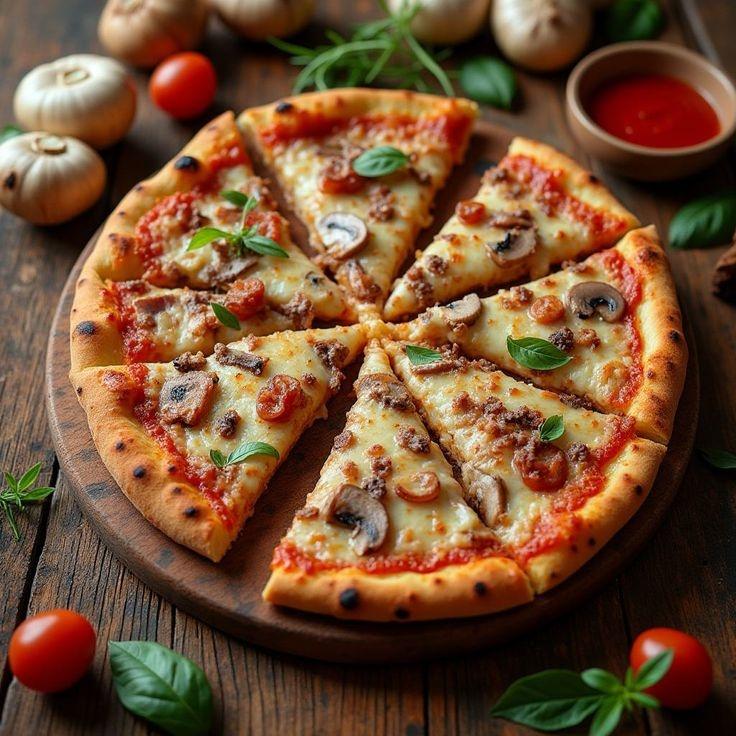Here at SilentWoodGlade, our philosophy is that the secret to an extraordinary pizza lies in the quality of the dough. With over 30 years dedicated to refining our dough recipe, we're enthusiastic about imparting some of our exclusive tips. While our precise mixture is ours alone (certain customs are meant to be preserved), these foundational guidelines will help you craft a pizzeria level pizza dough in your own abode.
Flour: The Cornerstone of the Dough
The best pizza dough starts with premium flour. We advise opting for 00 flour, a delicate Italian flour with a moderate protein level (about 12%). It strikes the ideal mix of elasticity and softness. If 00 flour isn’t an option, a decent alternative is bread flour, even though it will change the texture marginally.
Correct Water Temperature and Hydration
The water's warmth influences the time of fermentation and the maturation of the dough. For a prolonged fermentation (which enhances the flavor), use chilled water close to 45°F (7°C). For faster fermentation, warmer water around 85°F (29°C) is recommended. Maintain a hydration range from 60-70% for the most compatible outcome with domestic ovens.
Using Yeast Sparingly for Prolonged Fermentation
A key to a rich-flavored dough is mitigating the amount of yeast and extending the fermentation period. We incorporate only 0.2% fresh yeast to our flour mass for dough that ferments over 24 to 48 hours. This method allows the development of intricate flavors and results in a dough that's more digestible.
More Than a Taste Enhancer: Salt
Salt has a role beyond just seasoning - it fortifies the gluten framework and moderates fermentation. Using fine sea salt at a proportion of 2.5-3% to the flour mass is our recommendation. To ensure the yeast isn't immediately impacted, combine it after the flour and water are partially mixed.
The Craft of Fermentation
Post-mixing, let the dough undergo bulk fermentation at a normal room temperature for about two hours, then apportion it into separate dough balls. Encase these in lidded containers and chill for 24-72 hours. It's during this longer fermentation period that enzymes breakdown starches into simpler sugars, which is essential for both flavor development and achieving the distinctive caramelization of our crust.
Delicate Handling
When it's time to bake, remove the dough from chilling 1-2 hours ahead to temper. It’s critical to handle the dough with care to retain the gas bubbles. Rather than rolling, which can deflate the bubbles, gently use your fingers to press and stretch the dough out.
Perfecting the Bake: High Heat
Our ovens achieve incredibly high heat of up to 850°F (454°C), but home ovens typically top out at around 550°F (288°C). For home baking, use a preheated pizza stone or steel for no less than an hour to replicate that intense heat necessary for a crust that's crisply baked yet fluffy inside.
The mastery of pizza dough is a process of continuous learning. Every batch is an opportunity to deepen your understanding of the craft. Keep track of your adjustments and outcomes to determine the best approach for your kitchen.
Interested in watching how we make our dough up close? We invite you to our monthly pizza workshops where Chef Giulio exhibits these methods in greater detail. See our events calendar for future sessions!

